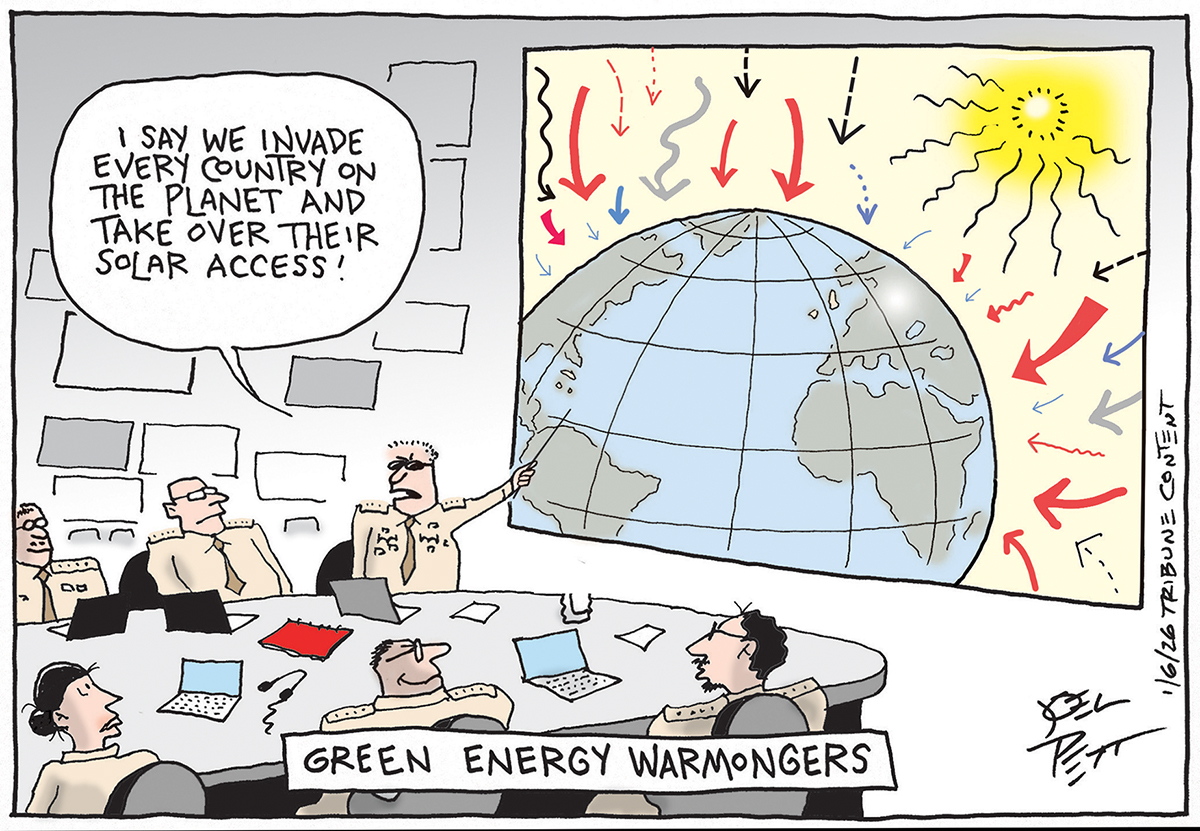Obama’s new New Deal
President-elect Barack Obama announced plans to launch the largest public-works program in a half-century, in the hope of creating new jobs and stimulating the economy.
What happened
President-elect Barack Obama this week announced plans to launch the largest public-works program in a half-century, in the hope of creating millions of jobs and stimulating the sinking economy. The new federal program—which echoes Franklin Roosevelt’s New Deal and Dwight Eisenhower’s massive project to create the federal highway system—will hire workers to rebuild the nation’s crumbling highways and bridges, renovate aging schools, extend high-speed Internet throughout the country, and make public buildings energy-efficient. Obama wouldn’t fix a price to his plan, but many experts estimated it would cost from $500 billion to $700 billion. “We need to act with the urgency this moment demands to save or create at least 2.5 million jobs,” Obama said, “so that the people who’ve lost them know that they have a future.”
Obama’s announcement followed news that 533,000 jobs had been lost in November, the largest one-month drop since 1974, which boosted the unemployment rate to 6.7 percent. Many economists are predicting a long and deep recession, with many more jobs losses to come.
The Week
Escape your echo chamber. Get the facts behind the news, plus analysis from multiple perspectives.

Sign up for The Week's Free Newsletters
From our morning news briefing to a weekly Good News Newsletter, get the best of The Week delivered directly to your inbox.
From our morning news briefing to a weekly Good News Newsletter, get the best of The Week delivered directly to your inbox.
What the editorials said
It’s hard to know what exactly we got from the government’s $700 billion bailout of Wall Street, said The Miami Herald. But you don’t need an economist to understand the “positive impact of putting some of the almost 11 million unemployed Americans into productive, well-paying jobs.” U.S. governors recently identified $136 billion in highway, rail, airport, and other infrastructure projects that are ready to go. Let’s get the money moving and create jobs.
It won’t be quite that simple, said the Denver Rocky Mountain News. Spending more of the taxpayers’ money is the easy part, but the Obama administration has to be very strategic in how and where these new public-works jobs are created, so that they actually help bring about an economic recovery. Next year’s federal deficit may be shooting past $1 trillion, and “even a carefully crafted stimulus plan will only add to the government’s red ink, which could fuel inflation, hinder long-term growth, and saddle future generations with tougher fiscal burdens.”
What the columnists said
A free daily email with the biggest news stories of the day – and the best features from TheWeek.com
Obama has an opportunity to leave a mark that extends well beyond this and future recessions, said Blair Kamin in the Chicago Tribune. Some of the nation’s most beloved architecture was produced by Roosevelt’s New Deal, which funded bridges, parks, post offices, and more. The president-elect, a purported “architecture buff,” should make “the lasting benefits of good design a part of the drive for economic recovery.”
For Obama’s plan to really make a difference, said David Brooks in The New York Times, he can’t simply build pretty roads and buildings. America is on the verge of a revolution in housing and transportation, in which the old hub-and-spoke system of suburbs surrounding an urban core is giving way to a more sprawling, complex system of communities. The tens of millions of people who’ve moved to distant suburbs and exurbs crave “community and social bonds,” and a truly successful new public-works program would focus on creating “suburban town squares” and other hubs. New roads and new mass transit should also be attuned to our new living patterns.
No matter how this public-works bonanza is spent, said Peter Navarro in The Christian Science Monitor, it is likely to do little for the economy. Consumption and business investment are “in free-fall,” and hiring people to build roads won’t change that. Whatever happened to toughing it out and letting “economic nature take its course”? Have we become “so soft and so fearful” that we can’t face a recession without asking the government to save us?
What next?
The key decision of Obama’s presidency, said Thomas Friedman in The New York Times, is whether to respond to the economic crisis by seeking to shore up and “calcify” transportation and housing patterns that have existed for decades—or to build an America better suited to the new century. It all depends on how bold Obama is willing to be. It makes no sense to talk about “green” buildings and more efficient light bulbs, for example, if he isn’t willing to impose a carbon tax and a new gasoline tax, and provide federal support for new battery and electric-car technology. If Obama shrinks from that fundamental challenge, all his spending will be for “naught.”
-
 ‘No Other Choice,’ ‘Dead Man’s Wire,’ and ‘Father Mother Sister Brother’
‘No Other Choice,’ ‘Dead Man’s Wire,’ and ‘Father Mother Sister Brother’Feature A victim of downsizing turns murderous, an angry Indiana man takes a lender hostage, and a portrait of family by way of three awkward gatherings
-
 Political cartoons for January 11
Political cartoons for January 11Cartoons Sunday’s political cartoons include green energy, a simple plan, and more
-
 The launch of the world’s first weight-loss pill
The launch of the world’s first weight-loss pillSpeed Read Novo Nordisk and Eli Lilly have been racing to release the first GLP-1 pill
-
 The billionaires’ wealth tax: a catastrophe for California?
The billionaires’ wealth tax: a catastrophe for California?Talking Point Peter Thiel and Larry Page preparing to change state residency
-
 Bari Weiss’ ‘60 Minutes’ scandal is about more than one report
Bari Weiss’ ‘60 Minutes’ scandal is about more than one reportIN THE SPOTLIGHT By blocking an approved segment on a controversial prison holding US deportees in El Salvador, the editor-in-chief of CBS News has become the main story
-
 Has Zohran Mamdani shown the Democrats how to win again?
Has Zohran Mamdani shown the Democrats how to win again?Today’s Big Question New York City mayoral election touted as victory for left-wing populists but moderate centrist wins elsewhere present more complex path for Democratic Party
-
 Millions turn out for anti-Trump ‘No Kings’ rallies
Millions turn out for anti-Trump ‘No Kings’ ralliesSpeed Read An estimated 7 million people participated, 2 million more than at the first ‘No Kings’ protest in June
-
 Ghislaine Maxwell: angling for a Trump pardon
Ghislaine Maxwell: angling for a Trump pardonTalking Point Convicted sex trafficker's testimony could shed new light on president's links to Jeffrey Epstein
-
 The last words and final moments of 40 presidents
The last words and final moments of 40 presidentsThe Explainer Some are eloquent quotes worthy of the holders of the highest office in the nation, and others... aren't
-
 The JFK files: the truth at last?
The JFK files: the truth at last?In The Spotlight More than 64,000 previously classified documents relating the 1963 assassination of John F. Kennedy have been released by the Trump administration
-
 'Seriously, not literally': how should the world take Donald Trump?
'Seriously, not literally': how should the world take Donald Trump?Today's big question White House rhetoric and reality look likely to become increasingly blurred